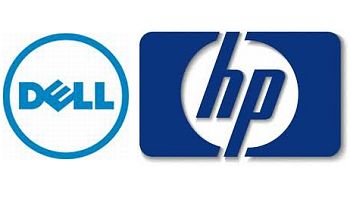HP has refreshed its 10-year-old flagship EVA (Enterprise Virtual Array) midrange storage array line-up, which has about 100,000 units currently deployed, HP Vice President of Storage Marketing Tom Joyce told eWEEK. The company also introduced new 3PAR- and IBRIX-based arrays, which came from acquisitions during the last two years.
“This will be the fifth generation of the EVA, so it’s been a very successful line for us for a long time,” Joyce said. “We’ve been saying that we’re committed to it for the markets that it serves, so this is the proof in the pudding.”
The newest EVA is the P6000, which includes thin provisioning and dynamic LUN migration software along with 8Gbit Fibre Channel, 10Gbit iSCSI and FCoE (Fibre Channel over Ethernet) support.
Thin Provisioning Up To PAR
The most important new feature added to the EVA is indeed thin-provisioning, which is not a surprise because this is exactly the strong point that 3PAR brought to HP when it was acquired in a bidding war with Dell in September 2010. The trickle-down in storage features took several months, but it is now available.
It is well-known that several competing systems providers have already offered TP for months – or even years.
HP also is introducing iSCSI connectivity in the EVA, which has been cable-bound to Fibre Channel all these years. iSCSI certainly is not news unto itself, but it is in this instance; many of the EVAs have been churning away for years in data centres with their FC networks and have not needed a connectivity upgrade. iSCSI in this product simply gives users another choice if they are in the process of upgrading.
Finally, the third-biggest new feature in the EVA is dynamic tiering – another standard feature on many other modern storage systems. HP again is playing catch-up here, but it knows that many companies in the mid-range market are just now getting into these former high-end storage IT features.
It is also true that conservative-natured IT shops, not needing to refresh their equipment in the last couple of years, also waited for a while to see how these new-fangled storage advancements were going to work in production before deciding to invest. Those companies, seeing that a major established player like HP is moving these features into their market, are no doubt more comfortable that things such as TP, dynamic tiering and iSCSI actually work and will not fall apart on them.
HP’s Converged Storage architecture and portfolio integrates HP Store360 scale-out software with BladeSystem and ProLiant server hardware.
Storage Management Services
The company’s services arm also has integrated 3PAR storage IP into the overall catalogue, which offers storage-management services that allow clients to “flex” their storage needs up and down with changes in demand, Joyce said. This service provides 3PAR in a utility storage model and has key efficiency features such as thin provisioning and autonomic data tiering.
Other new storage packages include:
HP X5000 G2 network storage arrays, built atop HP BladeSystems, are all automated and can be deployed in minutes, Joyce said. Top capacity in a 3U chassis is 32TB; it also features built-in file deduplication that can substantially reduce capacity requirements. It also comes with it native support for the Server Message Block 2.1 protocol and seamless integration with Windows Active Directory.
HP X9000 IBRIX network storage systems optimise retention of unstructured data with new compliance features and the capacity for more than 1 million snapshots, Joyce said. It features the new PACS (Picture Archive Communications System), that speeds access and retrieval of massive volumes of information needed for effective health-care diagnoses. To simplify implementation, the X9000 has been certified with GE Centricity, Agfa Impax, Sectra PACS and McKesson Horizon.
The X9000 IBRIX also can serve as an archive by providing unlimited capacity to retain email, SharePoint, multimedia and other file-based data, since it consolidates unstructured data from any source into a single repository. It has been certified with Symantec Enterprise Vault, iTernity iCAS, Quantum StorNext and CommVault Simpana, Joyce said.
“HP places a lot of emphasis on 3PAR as a centrepiece in its greater storage strategy, and that’s hardly a surprise given what it cost [$2.35 billion],” analyst Charles King of Pund-IT wrote in his weekly advisory June 8.
“On the upside, HP has toned down its 3PAR rhetoric since this year’s analyst conference, and the company’s storage portfolio is broader and better balanced than it has been for some time. On the downside, there’s little evidence that 3PAR will provide HP the means to move the needle hugely in its storage market share. Absent surprising or unusual developments, 3PAR’s $2.35 billion acquisition cost continues to look steep.”
These systems all will become available later this summer.






